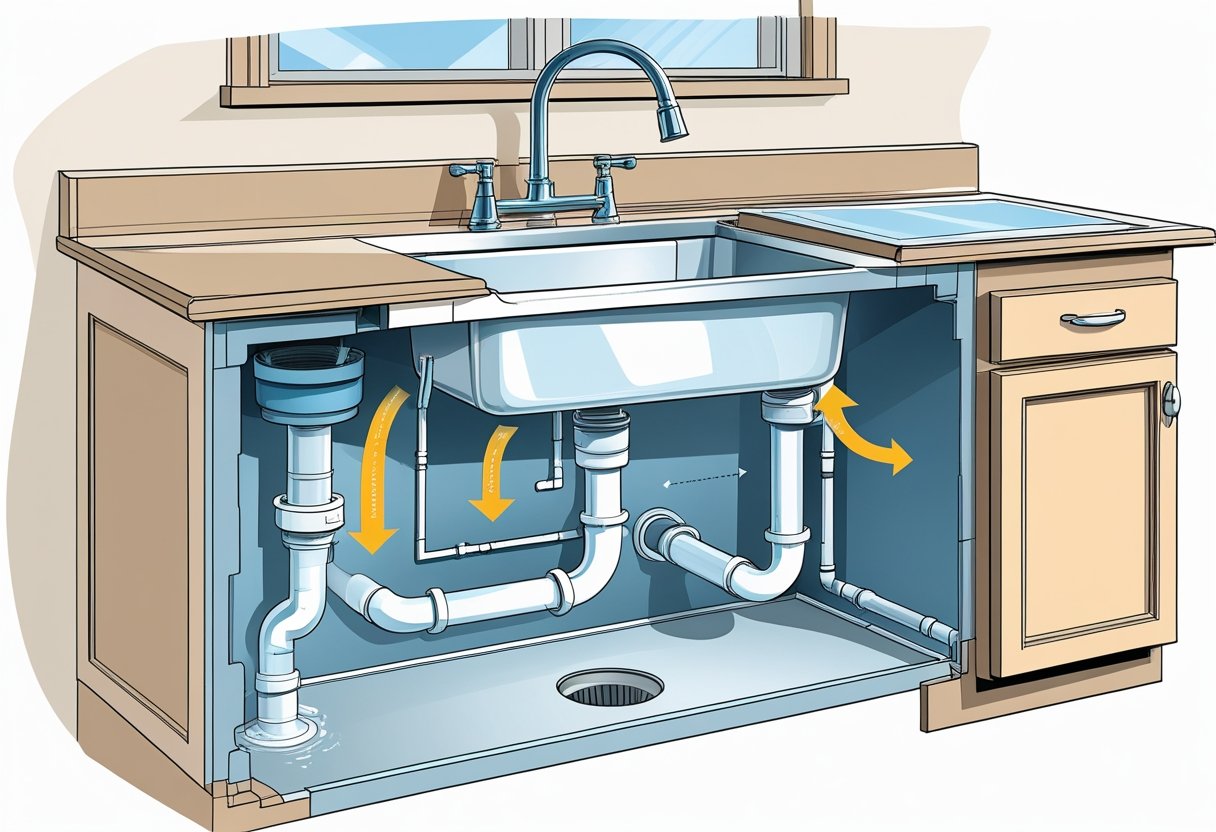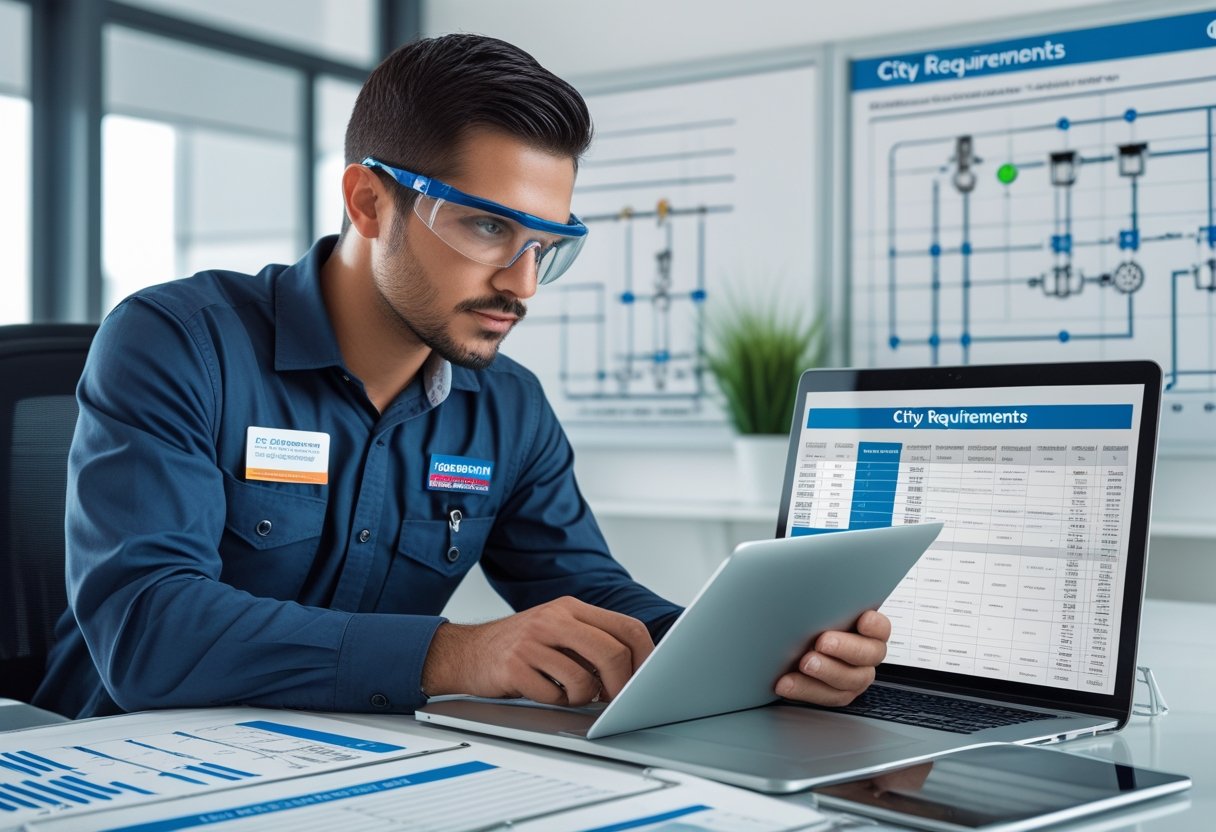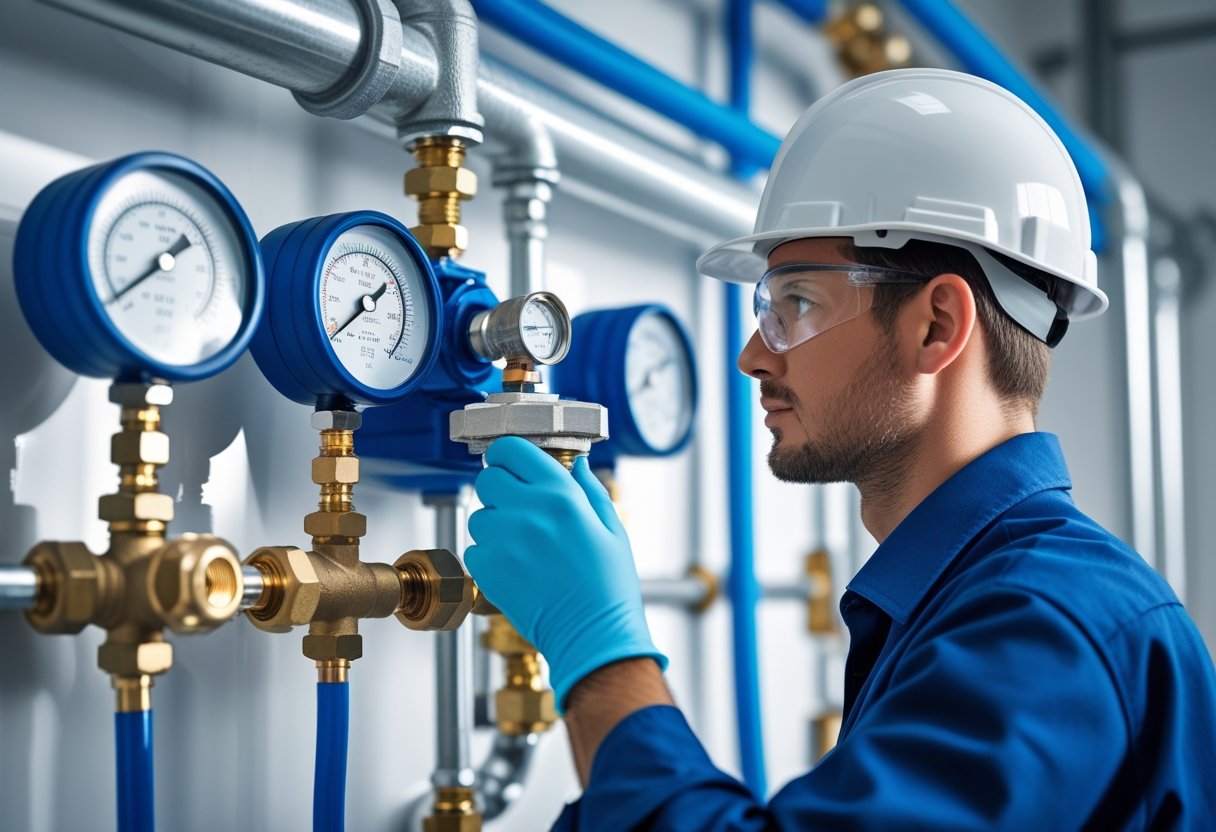Understanding the essential components of your plumbing system can safeguard your home from costly damages. The part of a sink that prevents backflow of dirty water is the air gap. This simple yet effective feature plays a crucial role in maintaining the integrity of your clean water supply by creating a physical barrier against contaminants.
Ensuring that your sink is equipped with this vital element is important for both health and safety. Without an air gap, dirty water could easily siphon back into your clean water lines, leading to potential health risks. At Pacific Backflow, we emphasize the significance of these preventative measures to protect your water supply.
If you suspect issues with your backflow preventer or want to ensure your home complies with local regulations, our experienced team is here to assist you. Trust Pacific Backflow for reliable service in San Diego County, providing expert testing, repairs, and installations tailored to your needs.
How a Sink Prevents Backflow of Dirty Water
Backflow prevention is essential for maintaining a safe and hygienic water supply. Understanding the mechanisms involved can help you ensure that your plumbing fixtures remain effective in keeping contaminated water from affecting potable water systems.
Role of the Air Gap in Plumbing Fixtures
An air gap is a critical component in plumbing systems designed to prevent backflow. It is the unobstructed vertical space between the water outlet and the flood level of the fixture. This gap creates a barrier, ensuring that any fluctuation in water pressure will not allow dirty water to siphon back into the clean water supply.
When a faucet or sink is used, the water flows down through this air gap, breaking any potential siphoning action. Without this separation, negative pressure created by other plumbing events could pull contaminated water back through the system. By adhering to codes that require air gaps, you are actively protecting the integrity of your water supply.
Physical Separation Between Clean and Contaminated Water
In plumbing systems, physical separation is key to preventing backflow. The design of fixtures, including sinks and faucets, incorporates mechanisms—like the air gap—that ensure clean and contaminated water cannot mix. This separation not only applies to air gaps but also involves proper drainage and waste systems.
A sink's trap further aids this process by holding a small amount of water that acts as a barrier against sewer gases and contaminants. These features are essential for maintaining high standards of sanitation in kitchens and bathrooms, helping to ensure that your water remains free from pollution.
Backflow Mechanisms in Sinks
Backflow can occur due to various factors, including sudden changes in water pressure, such as during heavy use or emergencies. When pressure drops, it can create a vacuum that draws water from unwanted sources back into your potable system.
To combat this, fixtures are designed with backflow prevention devices, including air gaps and check valves. For example, a properly installed air gap prevents contaminated water from flowing back into sinks, thus safeguarding your water supply. Regular maintenance, such as inspections and testing by professionals like Pacific Backflow, ensures these mechanisms are functioning correctly, protecting your health and your environment.
Understanding the Air Gap: Design and Function
The air gap is a vital element in plumbing systems that protects against water contamination. It creates a physical barrier between the clean water supply and any potentially harmful substances. Here's a closer look at its installation, functionality, and significance in various appliances.
Typical Installation and Placement
An air gap is typically installed at kitchen sinks and dishwashers, positioned between the fixture and the sink rim. This vertical space is crucial, facilitating adequate drainage while ensuring that contaminants cannot flow back into the water supply.
The air gap is visible as a small cylindrical fixture on the countertop or sink. Proper placement is essential. Ideally, the gap should be positioned at least two inches above the sink's flood level to effectively prevent backflow.
When installed correctly, the design allows water to flow freely during normal use, while providing a reliable barrier during backflow conditions.
How the Air Gap Blocks Contamination
The air gap serves as a protective measure by preventing dirty water from returning to the clean water source. If backflow occurs, water from the sink can no longer reach the drinking supply due to this physical separation.
For example, if a clog or block occurs in the drain line, water that might otherwise flow back into the faucet is halted by the air gap. This crucial design feature ensures the integrity of your plumbing system, safeguarding your water supply from contamination.
In many installations, state and local plumbing codes require air gaps in order to comply with safety standards.
Air Gaps in Dishwashers and Other Appliances
In kitchen setups, air gaps are particularly significant for dishwashers. They allow wastewater from the dishwasher to drain without risking backflow into the appliance. This is essential for maintaining hygiene and preventing contamination from food particles and detergent.
During operation, water pumped from the dishwasher travels through the air gap, where it can drain safely away. If plumbing issues arise, such as a blocked drain, the air gap ensures contaminated water does not re-enter the dishwasher or water supply.
For reliable backflow prevention in your home, consider utilizing services from Pacific Backflow. With nearly five decades of experience in safeguarding your water supply, you can ensure compliance and safety in your plumbing systems.
Alternative Backflow Prevention Devices and Methods
When ensuring the integrity of your water supply, various backflow prevention devices and methods can be employed. These devices help maintain safe drinking water by preventing the reverse flow of contaminated water into the potable supply.
Check Valves and Double-Check Valves
Check valves play an essential role in backflow prevention. They allow water to flow in one direction while automatically closing to prevent backflow. A single check valve is effective, but a double-check valve provides an additional layer of security. This device consists of two check valves in a series, offering enhanced protection against contaminants.
By utilizing check valves, you can ensure that even if one valve fails, the other will still maintain a barrier against backflow. These valves are commonly used in commercial and industrial settings and are vital for systems where water quality is paramount. Regular maintenance and testing are crucial to ensure their proper function, and companies like Pacific Backflow provide services that guarantee compliance and performance.
Vacuum Breakers and Pressure-Type Devices
Vacuum breakers are specialized backflow prevention devices designed to protect against backsiphonage. They work by allowing air into the system whenever a drop in pressure occurs, preventing contaminated water from being siphoned back into the potable supply. Vacuum breakers are commonly used in irrigation systems and faucets.
Pressure-type devices, such as reduced pressure zone (RPZ) assemblies, provide comprehensive backflow protection against both backpressure and backsiphonage. These assemblies contain two check valves and a relief valve, which vents any excess pressure. They are particularly effective in high-risk applications. You can rely on experts at Pacific Backflow to install and maintain these devices, which play a crucial role in safeguarding your water supply from contamination.
Common Issues and Maintenance for Backflow Prevention
Maintaining effective backflow prevention in your sink is essential for safeguarding your water supply. By recognizing potential issues and implementing proper maintenance, you can ensure your plumbing system functions correctly and reduces contamination risks.
Recognizing Clogs and Poor Drainage
Clogs in your sink can significantly hinder backflow prevention. If you notice slow drainage or gurgling sounds, these could be signs of a clog. Food particles, grease, and hair can accumulate in pipes, leading to blockages.
Monitor your sink's drainage regularly. A sudden change can indicate an issue that requires immediate attention. To address minor clogs, you might use a plunger or a mixture of baking soda and vinegar to break down buildup. Regularly inspecting and addressing clogs helps maintain the water pressure needed for proper drainage and backflow prevention.
If you've tried home remedies without success, consider contacting a professional. They can inspect your plumbing system thoroughly to identify hidden issues and provide the necessary repairs.
Inspecting Air Gap Operation
The air gap is a crucial component in preventing backflow into your sink. It creates a physical barrier, ensuring that contaminants cannot reach the clean water supply. Over time, the air gap can become obstructed due to mineral buildup or foreign debris.
Regular inspection of the air gap is vital to ensure optimal performance. Check for signs of wear or damage, and ensure it is free from blockages. If you find any obstructions, clean the area gently with a brush or cloth.
If you notice persistent issues or diminished water flow, consult a professional service like Pacific Backflow. Their expertise ensures your air gap operates efficiently to protect your water quality.
Routine Cleaning and Professional Service
Consistent cleaning and maintenance are essential for keeping your backflow prevention system in top condition. Regular cleaning of your sink, including the drain and traps, helps prevent buildup that could disrupt water flow.
Schedule annual inspections with a certified technician. At Pacific Backflow, your backflow system will be tested for compliance and functionality. This routine testing ensures any potential issues are addressed before they become significant problems.
Additionally, professional services can provide recommendations for maintaining proper water pressure and preventing leaks. This comprehensive approach will keep your plumbing system functional and compliant with local regulations.
Additional Backflow Solutions for Home Plumbing
Ensuring your plumbing system is equipped with effective backflow prevention measures is essential for maintaining clean water. Various options can enhance your system's protection, tailored to your specific needs.
Hose Bib Backflow Preventers
A hose bib backflow preventer is a crucial component for outdoor faucets. This device prevents contaminated water from siphoning back into the clean supply through the hose bib. It typically features a spring-loaded valve that opens when water flows in the correct direction and closes to stop reverse flow.
Installing a hose bib backflow preventer minimizes health risks associated with garden chemicals, pesticides, or dirt entering your drinking water. Regular maintenance is key to ensuring its functionality. If you're uncertain about the condition of your existing devices, consider contacting Pacific Backflow for inspection and assistance.
Barometric Loop Applications
Barometric loops are a mechanical solution often used in irrigation systems to prevent backflow. This method involves creating a loop in the piping that maintains vertical elevation. The design allows water to flow naturally downward while preventing any contaminants from rising back into the main supply.
This solution is particularly effective in scenarios where standard backflow preventers may not be suitable or when system pressure varies. Proper installation is critical. For guidance and service, including maintenance checks, reach out to experts like Pacific Backflow.
Choosing the Best Device for Your Needs
When selecting a backflow prevention device, consider several factors: the layout of your plumbing, local regulations, and specific hazards present in your environment. Options include various types of backflow preventers and tap valves that suit different applications.
Assess whether you need a simple hose bib preventer or something more complex like a reduced pressure zone (RPZ) assembly. Consultation with trained professionals can significantly improve your decision-making process. Quality service providers, such as Pacific Backflow, can guide you toward compliance and safety in your plumbing system.
Frequently Asked Questions
Understanding the components and methods for preventing backflow in sinks is essential for maintaining water safety. The following questions address common concerns regarding backflow prevention, effective devices, design aspects, and necessary maintenance.
What should be installed between the faucet and the flood rim of the sink to prevent backflow?
To prevent backflow, an air gap should be installed between the faucet and the flood rim of the sink. This device creates a physical barrier that stops contaminated water from flowing back into the clean water supply.
What device is commonly used to prevent the backflow of water in plumbing systems?
A backflow preventer is the most common device used in plumbing systems to prevent backflow. This device comes in various designs, including reduced pressure zone (RPZ) and double check valve assemblies, ensuring that the water supply remains uncontaminated.
How is backflow into a sink effectively prevented in residential settings?
In residential settings, backflow is effectively prevented by installing an air gap, using backflow preventers, and maintaining a proper drainage system. Ensuring that sinks are correctly plumbed and regularly inspected can minimize the risk of backflow.
What are the most effective methods to ensure backflow prevention in kitchen sinks?
For kitchen sinks, the most effective methods include installing an air gap and ensuring all fixtures have appropriate trap configurations. Regular testing of these measures will help in identifying any potential points of failure.
How does a sink's design contribute to backflow prevention?
A sink’s design plays a crucial role in backflow prevention. Features like elevated faucets and strategically designed drainage systems help maintain proper water flow and reduce the risk of backflow incidents.
What regular maintenance can prevent sink backflow in a home plumbing system?
Regular maintenance involves checking backflow preventers, cleaning sink traps, and ensuring that all piping is clear of obstructions. Routine inspections by professionals, such as those provided by Pacific Backflow, can help identify issues before they become significant problems.










